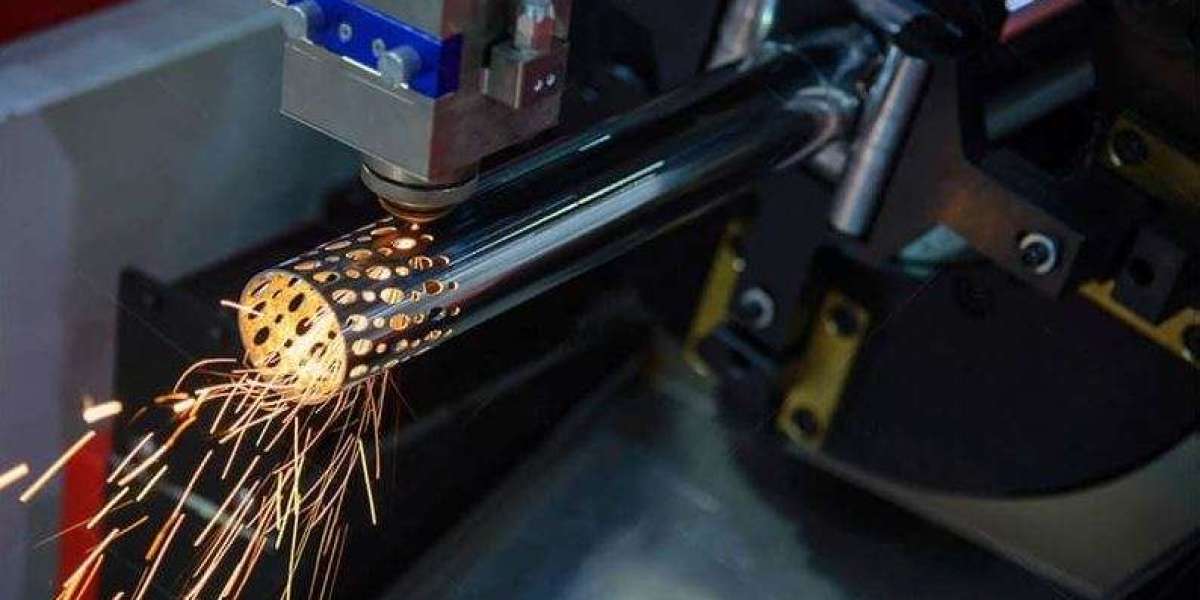Before: The Old Way of Cutting Pipes
Pipes were cut as a compromise game for years. Speed, efficiency, and precision never coexisted. Fabricators employed the old ways—plasma cutting, saws by hand, abrasive wheels—but there was always a catch with each.
A saw blade struggles, and edges get roughed up, so extra finishing is needed.
A torch melts through but too much heat distorts the material.
A mechanical cutting tool had to cut at an angle, and coarse textures were the result.
Material loss could not be avoided, vast amounts of pipe wasted because of blunders.
Fitting, filing, grinding entailed more labor—each stage of the work. Accuracy proved to be problematic, and ornate design approached impossibility.
With technology becoming increasingly sophisticated in the industries, such constraints are no longer acceptable. The demand for quicker, cleaner, and more efficient cutting pushed the quest for innovation into high gear. And then along came laser technology.
Today: The Laser Revolution
A thin, concentrated beam of light glides smoothly along a metal tube. No grinding, no heat distortion, no waste motion—pure precision.
The laser travels along a digital blueprint, cutting precisely as planned.
Smooth edges are created without the requirement for post-processing.
Delicate shapes that were previously impossible with standard processes are easily cut.
There is less material loss because cuts are made with functionality in mind.
Laser pipe cutting isn't a new tool, but an outright revolution in the way pipes are utilized and conceived in design these days.
Boundless Precision
Traditional cutting methods restricted designers to compromising their ideas. Sharp cutouts, sharp corners, or flush joints were not within reach. But laser cutting of pipes removed these constraints, and hitherto unknown freedom in design was the outcome.
1. Geometric Sophistication
High-tech lasers can remove designs micron by micron, and ornamental design, tiny interlocking patterns, and flush joints are possible. In architectural building plans, industrial buildings, or exquisite metal works, the laser will not leave any flaw in details.
2. No Room for Error
The laser cutting operation is so precise that every cut piece ends up being a replica of the previous one. The result is this:
Parts fit together as designed with significantly fewer requests for fasteners or welding.
Designers can create more complex mechanical assemblies with minimal opportunity to make errors.
Adjustment and rework—a characteristic of traditional methods—is nearly eliminated.
3. Global Versatility Across Materials
Laser pipe cutting isn't limited to steel. It cuts aluminum, titanium, copper, and plastics, too, which is why aerospace, construction, and automotive manufacturing legends in industry embrace it.
What's the effect? Creativity to be free. Rather than design to the constraint of a tool, the tool is designed to the design.
Less Waste, More Efficiency
1. Maximum Material Utilization
Conventional cutting techniques produce excess scrap. A slip with a cut, a twisted blade, or a sure miscalculation equals wasted material.
Laser pipe cutting, on the other hand, is governed by sophisticated software that maximizes every cut with as much material as possible. The outcome? More functional parts from the same raw material.
2. Less Mistakes = Less Waste
Even the most adept by-hand cutting techniques are susceptible to human miscalculation. A miscalculated off-angle cut will make an entire piece unusable, wasting resources. Automation using laser cutting eliminates any chance of calculation mistake, and every piece is cut to precise specifications.
3. No Additional Processing Required
Post-processing is one of the biggest hidden costs of conventional cutting—grinding off burrs, deburring edges, or redrilling crooked cuts.
Laser-cut pipes are installation-ready with clean, sharp edges and the exact size. That saves unnecessary labor, time, and money and waste in general.
Speed, Automation, and Cost Savings
Manufacturing is money equivalent to time. Conventional cutting is a multi-step process through manual adjustments and enormous amounts of labor. Laser pipe cutting reverses that with the following:
1. Quick Production Without Compromising Quality
One laser machine can cut many pipes in minutes, not hours by mechanical or manual cutting. This implies:
Quick production line turnaround.
Higher production with fewer machines.
Same high quality on each piece.
2. Lower Labor Costs
Computer-controlled laser cutting minimizes the labor required. Operators merely program the machine, load the computer program, and allow the automation to take over. This eliminates:
Need for trained personnel in manual cutting operations.
Time spent in rework because of human error.
Overall cost of production during production of higher accuracy.
3. Scalability for Any Business
Whether your business requires one custom piece or hundreds of the same parts, laser pipe cutting produces repeatable results. This makes it particularly suitable for:
Small workshops producing one-off pieces of work.
Large manufacturers making high-volume industrial parts.
Architects and engineers who are on the leading edge of new design.
The Future of Fabrication
The switch to laser pipe cutting isn't an upgrade—it's an evolution that's long overdue. Industries are asking for:
Greener manufacturing methods,
Greater manufacturing precision,
Cheaper and quicker solutions,
Laser cutting is the highest-technology and lowest-cost solution.
The grinding saw ring and sharp eye of wasted scrap metal are the traces of the past. All that's left is a cleaner, quicker, and smarter method to transform the world—one accurate cut at a time.








